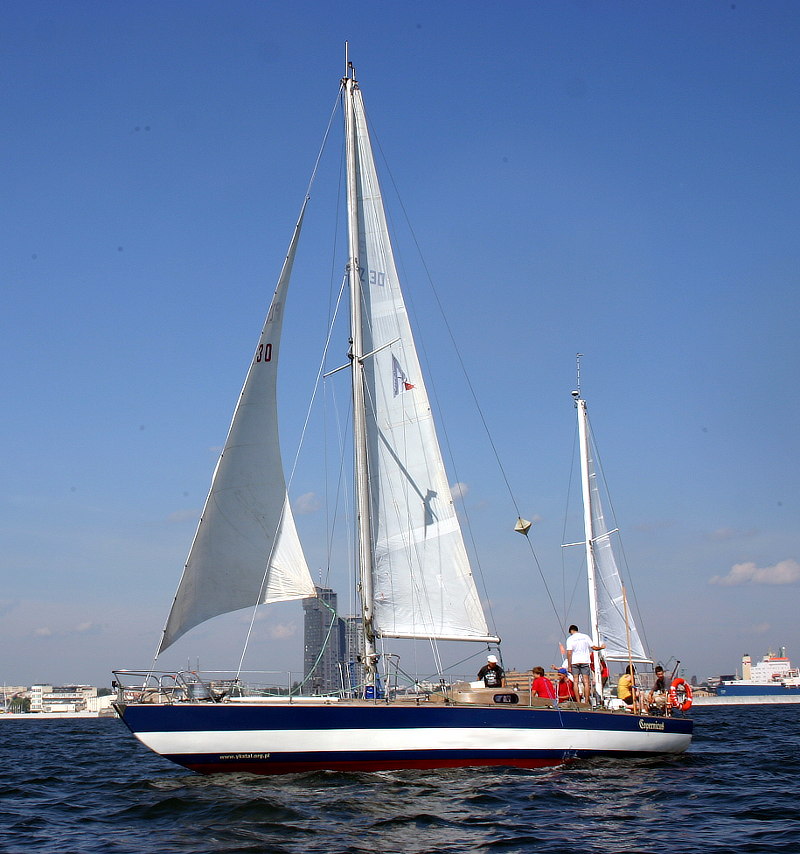Monohulls vs Multihulls: Which choice for sailing on Swiss lakes?

Two approaches for our inland waters
Swiss lakes offer an idyllic setting for pleasure boating, but the choice between monohulls and multihulls often divides enthusiasts. Each type of boat has its own specific characteristics, which adapt differently to the particularities of our Alpine waters. Our analysis will guide you in making the choice that best suits your needs and local conditions.
Comparative characteristics: strengths and weaknesses
Stability and behaviour on water
Monohulls :
- More sensitive to the short waves typical of our lakes
- A natural gîte that may surprise beginners
- Better penetration of the chop during summer gales
Multihulls :
- Superior stability, ideal for families
- Less lateral movement when motorboats pass through
- Risk of sudden capsize (rare but possible) in extreme conditions
Manoeuvrability in our ports
Monohulls :
- Reduced turning radius, an advantage in the overcrowded ports of Lake Geneva
- Less sensitive to crosswinds during berthing manoeuvres
- Easier to position in the narrow squares of historic ports
Multihulls :
- Problematic lateral congestion in some older ports
- Excellent precision at low speeds thanks to the wide spacing between the motors/safans
- Less affected by currents near river mouths
Comparison table: Adaptation to Swiss lakes


Considerations specific to Swiss lakes
Local winds and meteorological phenomena
Swiss lakes are renowned for their particular wind regimes. The traditional monohull, developed over centuries on our waters, adapts naturally to these conditions:
- Better upwind performance in regular thermal breezes
- Predictable behaviour when sudden changes occur (smoking)
- Less wind resistance when parking in port
However, catamarans and trimarans offer a more stable platform during windy spells on Lake Geneva or Lac de Neuchâtel, but can become difficult to handle for smaller crews.
Depth and access to banks
Multihull advantage : The shallow draught of multihulls (often less than 80 cm) allows access to anchorages inaccessible to keelboats:
- Shallow creeks on Lake Thun
- Sandy areas of Lake Neuchâtel
- Shoals in Bouveret or Prangins Bay
Monocoque limitation : With draughts of 1.50 to 2 metres, some areas remain inaccessible, in particular :
- Sandbanks near deltas
- Some picturesque beaches and anchorages
- The approaches to several historic ports at low water
Practical aspects: costs and availability
Berths
The issue of berths remains crucial in Switzerland:
Monohulls :
- Easier to fit in traditional ports
- More and cheaper places (on average 15-20% cheaper)
- Better resale value on the local market
Multihulls :
- Often require special or double seats (additional cost of 30-80%)
- Longer waiting lists in popular ports
- Easier mooring at moorings thanks to stability
Comparative maintenance costs

A cross-section of Swiss sailors
"After 15 years on a monohull, my switch to a catamaran was a revelation for family outings. The space and stability have won everyone over. On the other hand, certain ports on Lake Geneva are still problematic. - Jean-Philippe M., sailor on Lake Geneva since 1998
"My Dehler 33 goes everywhere, doesn't cost a fortune in space and fits into even the most congested harbours. It's ideal for our 'after-work' sailing on Lake Zurich." - Sandra K., Zurich
Trends in 2025: development of the Swiss market
Recent innovations
Monohulls :
- Lifting keels for lakes
- Designs optimised for the thermal winds of our regions
- Active stabilisation systems for greater comfort
Multihulls :
- Compact models adapted to Swiss port constraints
- Width reduction systems for mooring
- Lightweight construction for improved upwind performance
Registration statistics 2024
Breakdown of new registrations on the main lakes :
- Monohulls: 68%
- Catamarans: 24%
- Trimarans: 8%
The trend shows a steady increase in multihulls (+3% per year), but monohulls are still in the majority, particularly on smaller lakes and mountain waters.
Tips for making the right choice
Questions to ask before buying
- On which lake(s) will you mainly be sailing?
- Do you already have a mooring?
- Are you focusing on performance or comfort?
- Do you tend to sail as a family or with a sports crew?
- What is your total budget (purchase + annual maintenance)?
Recommendations by type of use
For the family weekend cruise:
- On large lakes (Lake Geneva, Constance): multihull advantage
- On medium-sized lakes (Neuchâtel, Zurich): both options remain valid
- On small lakes: monohull advantage
For the regatta :
- FVLJ Championship, Bol d'Or: sport monohulls or multihulls
- Local regattas: focus on monohulls (more series represented)
For occasional walks :
- Pre-purchase rental recommended
- Sailing schools offer comparative trials
Conclusion: a personal choice adapted to our lakes
There is no universal answer to the monohull versus multihull debate on Swiss lakes. The specific characteristics of our waters, the harbour infrastructures and your personal use will determine the best choice.
The trend is towards multihulls for family use, while monohulls retain their advantage for smaller crews and sporty sailing. The best thing is to try out both configurations before deciding.
The last word
Whatever your choice, Swiss lakes offer an exceptional playground for all types of craft. The most important thing is to sail with respect for these natural jewels that are the pride of our country.
